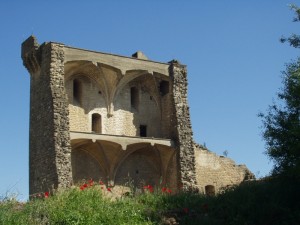 I enjoy wine, but sometimes I am so intrigued by the story behind the bottles that the actual tasting takes second seat. Chateauneufdu-Pape is one of those stories, a worthy centerpiece for France’s southern Rhone, with its distinctly embossed bottle boasting the old papal coat of arms.
I enjoy wine, but sometimes I am so intrigued by the story behind the bottles that the actual tasting takes second seat. Chateauneufdu-Pape is one of those stories, a worthy centerpiece for France’s southern Rhone, with its distinctly embossed bottle boasting the old papal coat of arms.
It’s home to an ancient papal village just north of Avignon possessing a certain and memorable aura.
The first of the Avignon popes, Clement V was installed as pope in 1305. Because of strained relations with the king of France, the Rome papacy and politics in general, the pontiff moved the papal residence to Avignon in 1309, where it remained until 1377.
While Clement gets credit for moving the papacy, it was his successor, Pope John XXII, who was responsible for the progress of the regional vineyards’ prosperity. John was a romantic and longed to retire from the bustle of Avignon to the tranquility of the countryside. A formal retreat was sought and Chateauneuf, complete with a castle that had been ruined, was an ideal choice. Construction of the retreat was started in 1318 and, even with the affluent standards of the time, was a monster endeavor. John was only ableto live in Chateauneuf for a year before his death.
The vineyard prospered for many years but the even tual return of the papacy to Rome and later the devasta tion by phylloxera led to its decline.
In 1923, a monumental shift in the history of wine occurred with increased notoriety of French wines Baron Pierre Le Roy de Boi seaumarie (who deserves credit for changing the wine industry to what we know today) spearheaded a move ment that led to the French system of regulation.
He wanted to safeguard the wines of Chateauneuf du-Pape from the many abuses going on in the busi ness. His six stipulations were monumental for the time: a natural delimitation of the area to be planted only specific grapes to be planted, regulations of prun ing and training, minimum alcohol level of 12.5 percent (this is still the highest min imum level in all of France)specific harvest details, no rose production, and wine failing to pass the tasting panel would not be sold as Chateauneuf-du-Pape. These conditions remain largely unchanged today.
So to answer the question I am asked each year around this time, what wine will I be serving at Easter? Chateauneuf-du-Pape is an easy choice after you know the story.
THE LITTLE SPLURGE
- 2010 Clos de L’Oratoire Des Papes, France (about $53 retail)
THE BIG SPLURGE
- 2010 Domaine du Vieux Telegraphe, France (about $95 retail)